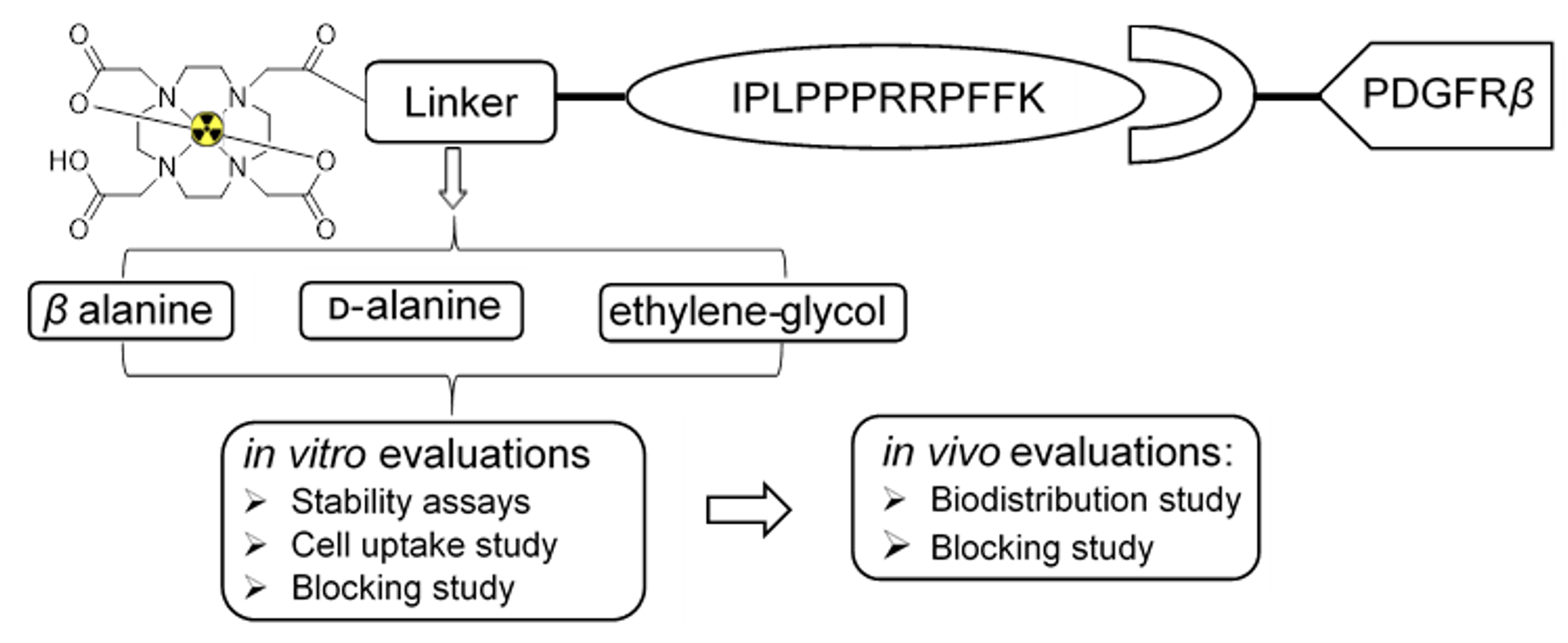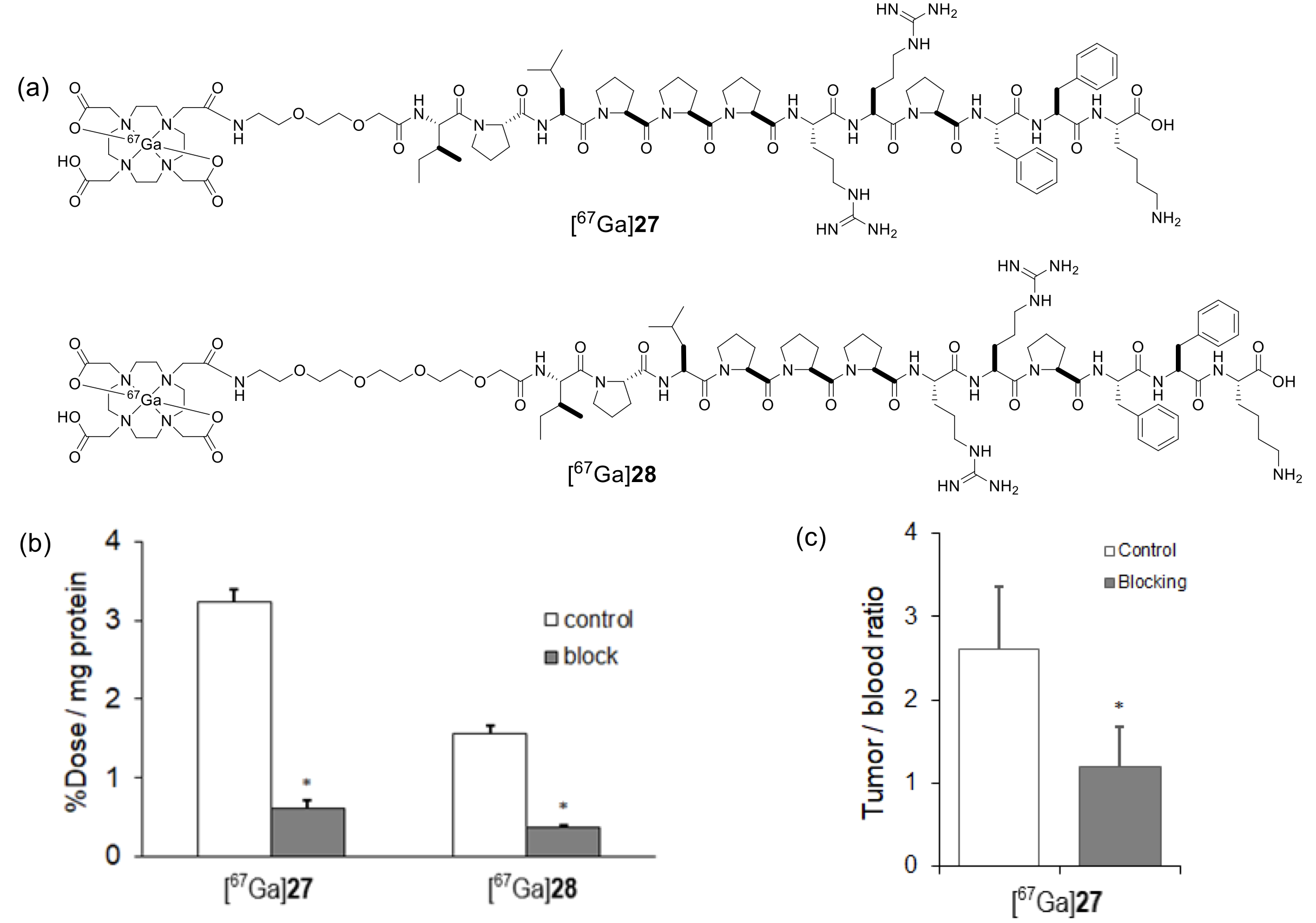Abstract:In a recent study published in the journal Molecules researchers at Kanazawa University describe the use of novel gallium-based radiotracers to visualize tumors in the body
Cancer cells highly express specific proteins on their surface which helps oncologists identify and target these cells. For example, platelet-derived growth factor receptor β (PDGFRβ) which is often found on breast and colon cancer cells has been used to design probes that can attach to it and facilitate imaging of these cells. All such tracers designed to date have shown low accumulation within tumor tissues making it hard to visualize the cancer accurately. However, a team led by Kazuma Ogawa at Kanazawa University has now used radiolabeled gallium (Ga) to create tracers which showed potential when tested in mice.
Typical imaging tracers consist of three segments: a bait molecule designed to bind to the target (PDGFRβ in this case); a radioactive molecule that facilitates imaging; and a linker molecule that connects the other two. In their study, the researchers adopted peptides designed to attach to PDGFRβ. Peptides are miniature proteins that quickly hustle into different organs in the body without attracting much attention from the immune system. For the next segment, an atomic form of gallium known as 67Ga, which is an alternative radionuclide instead of 68Ga, was used. 68Ga can emit radiations which are picked up on a PET scan—a high-resolution imaging technique. The two segments were connected using either of six different linkers, creating a total of seven peptide-based tracers (one had no linker). After synthesis, radiochemical yields and satisfactory purities of all the tracers were first confirmed.
The stability of these tracers was then examined in buffer and murine plasma. Two tracers, namely, [67Ga]27 and [67Ga]28 exhibited highest levels of stability. These two tracers also showed high uptake when incubated with cancer cells. To investigate them deeper, [67Ga]27 and [67Ga]28 were injected into tumor-bearing mice. While the tumor accumulation was not as high as expected, within an hour, almost twice as much of each tracer was present within tumor tissues than in the blood. The tracers were also less predominant in non-tumorous organs indicating their potential for accurate imaging. When peptide as blocking agent and [67Ga]27 were co-injected into the tumor-bearing mice, the tumor-to-blood ratio was significantly decreased. This result indicates the accumulation of [67Ga]27 in tumor is PDGFRβ specific.
[67Ga]27 and [67Ga]28 show promise in cancer detection and treatment monitoring due to their success in reaching tumor sites. There are, however, still several steps before we may see them being used as a diagnostic aid for patients. “Further structural modification to increase the accumulation of the tracer in the PDGFRβ-positive tumors is necessary for effective in vivo imaging,” reports the team.

figure1.
Design of study. Rradiotracers targeting PDGFRβ, 67Ga-DOTA-(linker)-IPLPPPRRPFFK peptides, were designed, synthesized, and evaluated. (ᴅ-alanine)3, (ᴅ-alanine)5, (β-alanine)2, (β-alanine)4, (ethylene glycol)2, or (ethylene glycol)4 was inserted between the IPLPPPRRPFFK peptide N-terminus and Ga-DOTA complex.

figure2.
[Background]
Gallium scans and positron emission tomography (PET) – Two atomic forms of the element gallium, 67Ga and 68Ga, are used in medical imaging because of their radioactive properties. Both these forms of gallium are unstable and emit radiation which is easy to pick up on different scans. 67Ga predominantly emits gamma rays, while 68Ga emits atomic particles known as positrons. Annihilation radiations born from these positrons are detected on a PET machine and used for visualizing target organs. 67Ga has longer half-life (3.3 days) than 68Ga (68 min). Thus, for this preliminary investigation the team used 67Ga to first construct the tracers and evaluate them.
[Article]
Title: Development of Radiogallium-Labeled Peptides for Platelet-Derived Growth Factor Receptor b (PDGFRb) Imaging: Influence of Different Linkers
Journal: Molecules
Authors:Nurmaya Effendi, Kenji Mishiro, Kazuhiro Shiba, Seigo Kinuya, Kazuma Ogawa
DOI: 10.3390/molecules26010041
[Funder]
This research was supported by MEXT KAKENHI, Grant-in-Aid for Early-Career Scientists (20K16722).



 PAGE TOP
PAGE TOP